Emerging innovations areas in hydrogen industry
Here, on this new SynerHy blog post, we highlight GlobalData‘s report “Hydrogen Economy: key disruptive forces for the global transition to sustainable energy” and, especially, four emerging areas of innovation based on patent grant numbers over the last few years, according to EPOrg:
- Hydrogen ICE
- Hydrogen-based e-fuels
- Solid Oxide Fuel Cells (SOFC)
- Graphene nanocrystals for hydrogen storage
Fuel cells, alternative propulsion systems and renewable power sources will make hydrogen an integral part of the global transition to sustainability. The hydrogen economy boom is backed by the global need for sustainable energy and its development can be accelerated by three main factors: zero carbon emissions, declining production costs and being a substitute product.
The following picture shows the different areas of hydrogen innovation, divided into emerging, under development and at high level of development.
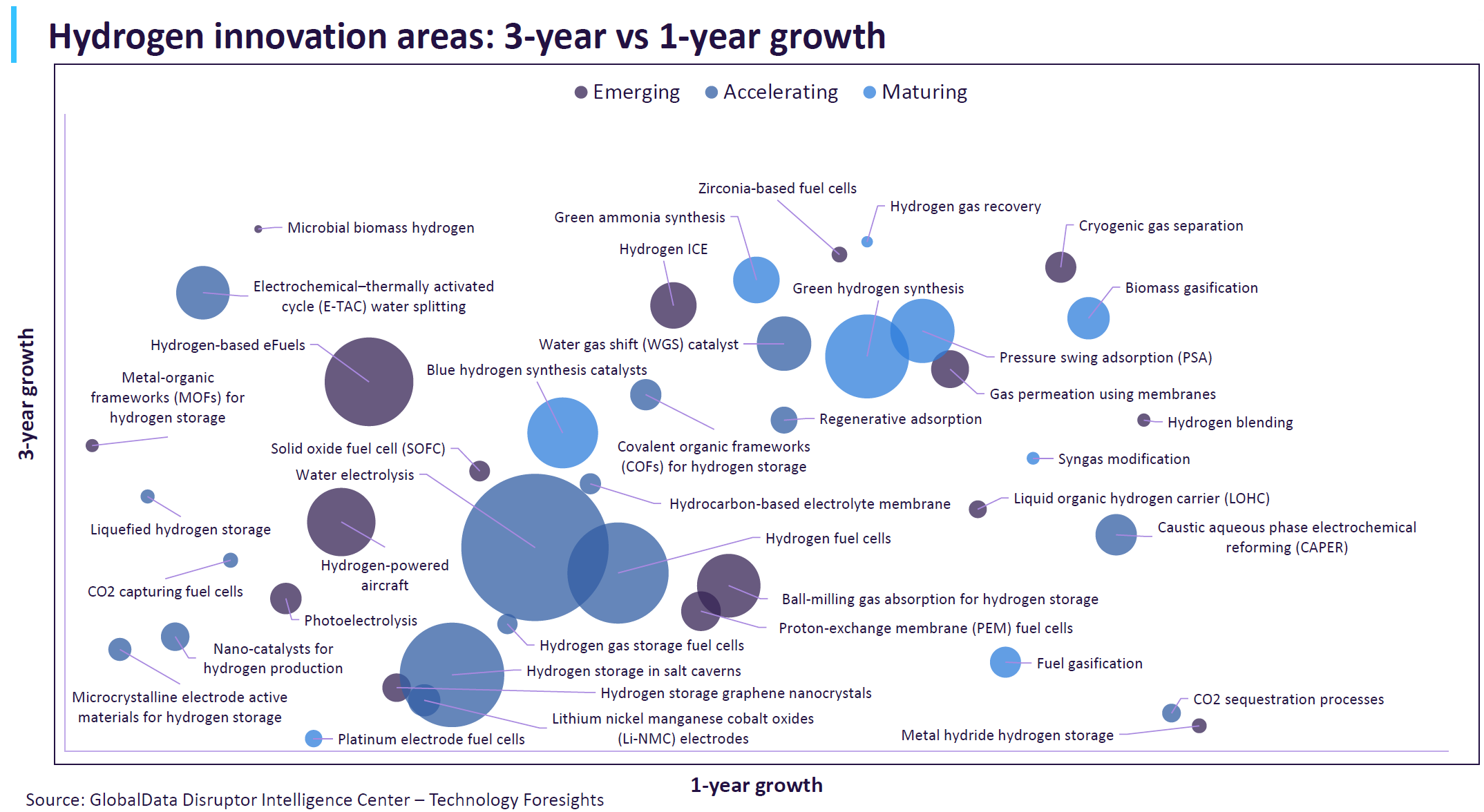
Hydrogen ICE
On previous SynerHy blog posts, we discussed hydrogen-powered ICE engines and their progress and its importance in accelerating the industry’s decarbonisation of heavy-duty vehicle propulsion systems. To reduce carbon emissions, existing vehicles will be refitted to incorporate hydrogen engines or modified to use hydrogen-based fuels. Disruptive insights:
- Zero-impact mobility: The impact of hydrogen ICE on the environment is negligible, as the exhaust gas contains essentially water vapor. These engines emit no climate-damaging greenhouse gases or health-damaging pollutants, since the hydrogen fuel is produced from renewable energies and water.
- Thermal efficiency: The high autoignition temperature of hydrogen allows larger compression ratios to be used in a hydrogen engine. The thermal efficiency of these engines is much higher than petrol and diesel engines.
- Prompt ignition: The wide range of flammability and low ignition energy allows hydrogen engines to operate as well as ignite lean mixtures ensuring easy and prompt ignition.
- H2 combustion emits water vapor. Traces of CO2 from the lubricating oil are close to zero, as are NOx emissions due to the low combustion temperature achieved.
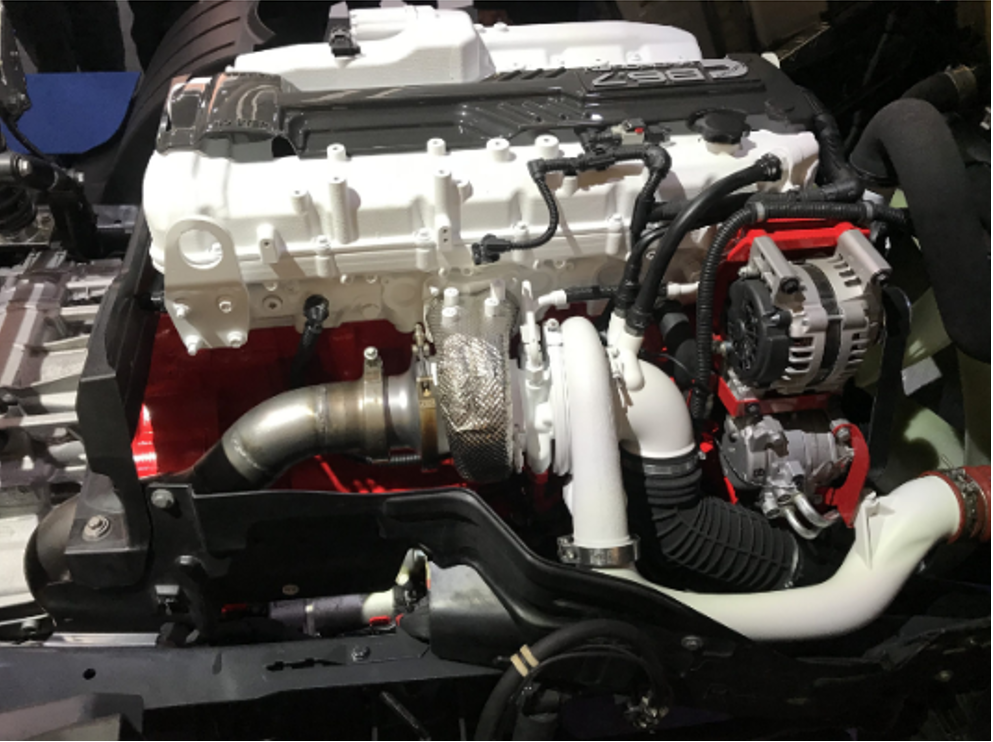
Figure 1 – ICE de H2 B6.7 engine
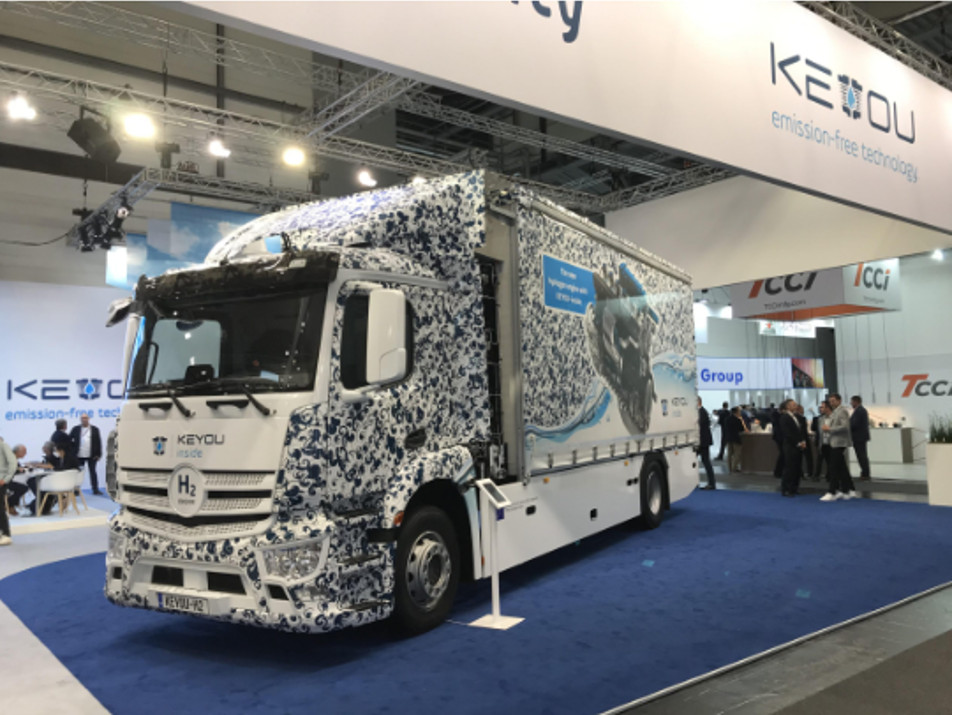
Figure 2 – KEYOU 18 t H2 truck
Several companies have announced the launch of H2 ICE hydrogen engines for commercial vehicles, such as Toyota, Keyou, Cummins and China’s Yuchai International Limited, as mentioned in previous blog articles.
Hydrogen-based e-fuels
E-fuels and synthetic fuels are types of drop-in replacement fuels. Hydrogen, obtained from wind, solar and nuclear energy sources, is combined with carbon dioxide or carbon monoxide captured from the atmosphere. Hydrogen-based e-fuels can be used to reduce CO2 emissions in sectors that cannot be directly electrified, such as long-distance aviation, feedstock in chemical production, steel production and high-temperature industrial processes. Disruptive insights:
- Easier storage and transportation: hydrogen can be used to synthesise hydrocarbon fuels by adding carbon from CO2. These e-fuels are easier to store and transport than electricity or pure hydrogen.
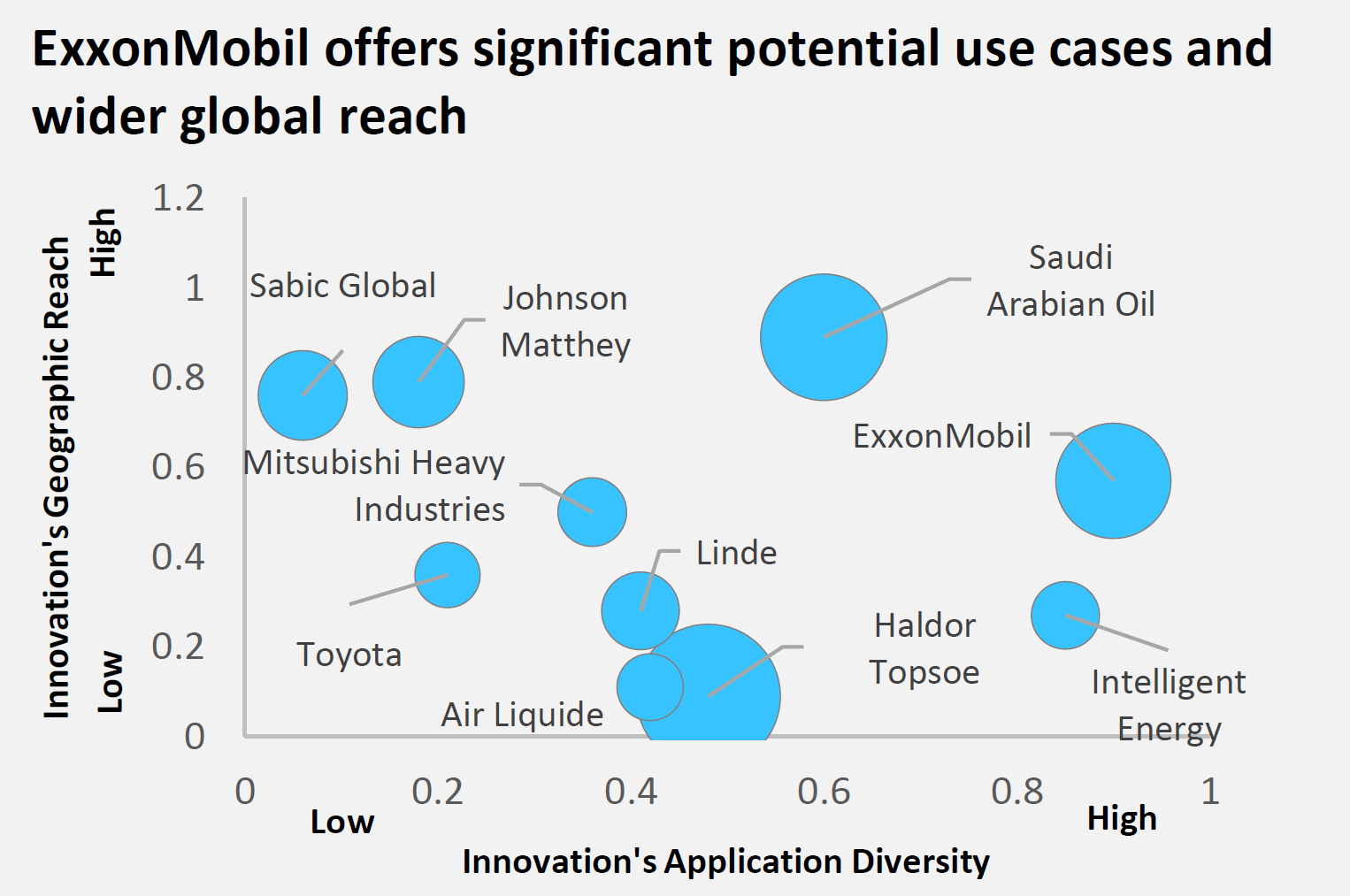
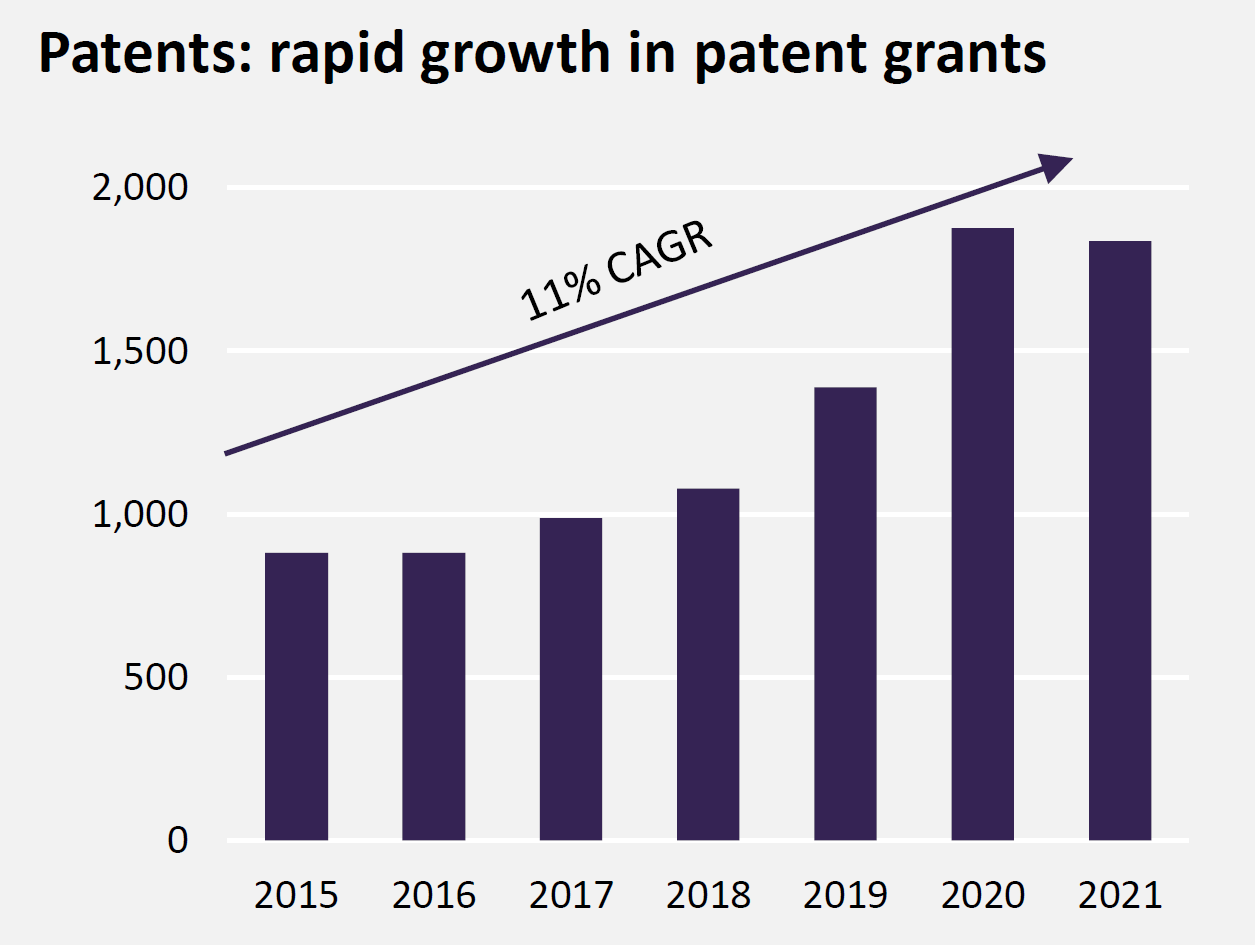
- Direct substitutes: E-fuels have the same properties and efficiency levels as fossil fuels and can be burned in conventional combustion processes and engines, thereby directly replacing these fuels.
- Environmentally friendly: e-fuels emit significantly less nitrogen oxides and particulate matter than conventional fuels and are climate neutral. No additional greenhouse gases are produced while they are in use.
In recent years, the number of patents in this field has increased exponentially. Amazon and Porsche, among others, are investing in the development of these eco-fuels.
Solid Oxide Fuel Cell (SOFC)
Solid oxide fuel cells (or SOFCs) produce electricity directly by oxidising fuels. SOFCs have solid oxide or ceramic as their electrolyte material. Main advantages of this class of fuel cells include high combined heat and power efficiency, long-term stability, fuel flexibility, low emissions and relatively low cost. Their major disadvantage is their high operating temperature, which results in longer start-up times and mechanical and chemical compatibility issues.
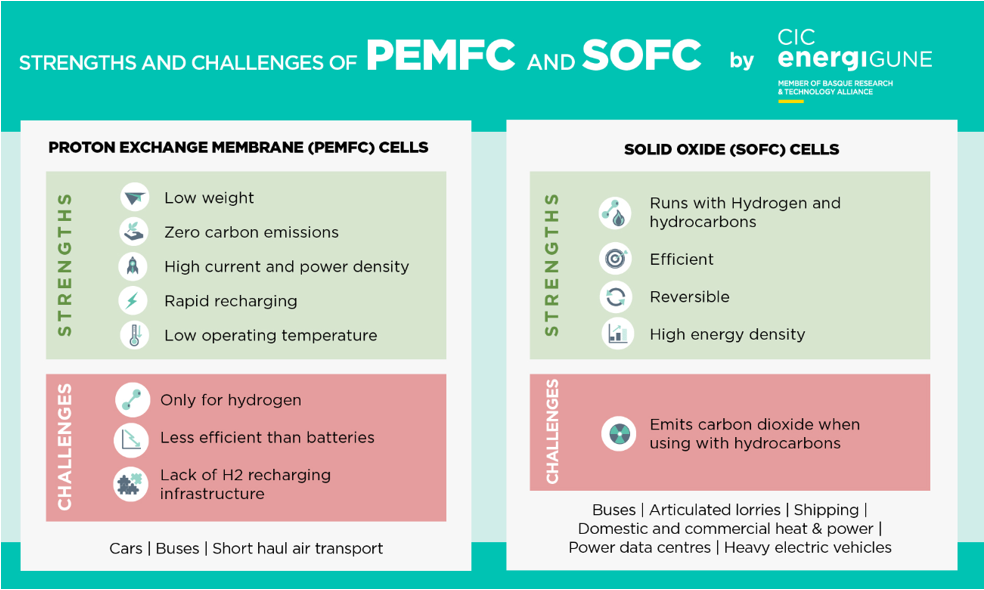
Fuel efficiency can be improved by harnessing the waste heat produced by SOFCs to central heating systems. Disruptive perspectives:
- Fuel flexibility: Unlike PEM fuel cells, which require pure hydrogen as fuel, SOFCs can operate with hydrogen and carbon monoxide, as well as hydrocarbon fuels such as natural gas and gasified coal, thereby offering increased fuel flexibility.
- Power generation: SOFCs have emerged as a critical technology for power generation due to their high fuel-to-power efficiency and minimal adverse influence on the environment.
- High temperature: SOFCs can operate at higher temperatures than PEM fuel cells. In addition, they can also be combined with a gas turbine in order to increase their efficiency. If waste heat recovery is used, the efficiency is further increased.
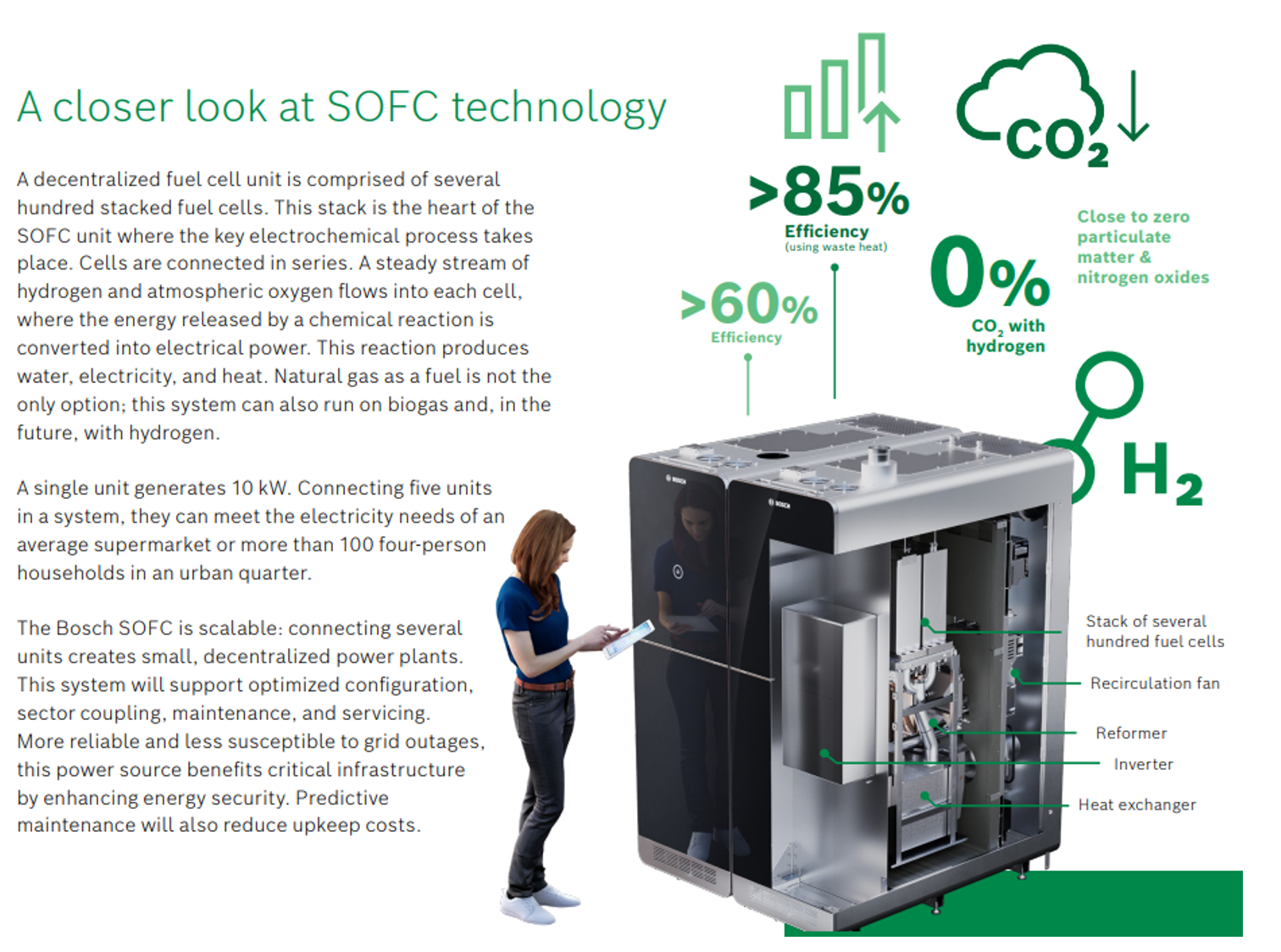
Source Bosch
Hydrogen storage graphene nanocrystal
Finally, we would like to point out an emerging yet disruptive form of hydrogen storage through graphene nanocrystal technology.
Graphene nanocrystals are hydrogen storage materials. These materials are usually intermetallic materials containing interstices with a suitable binding energy for hydrogen, which allows its absorption or desorption near room temperature and atmospheric pressure. Owing to their tremendous adsorption capacity, excellent catalytic performance, eco-friendliness and abundant availability, graphene-based materials are suitable alternatives for environmental pollutant control and energy-related systems, especially when it comes to hydrogen generation and storage. Disruptive insights:
- Stability and transportation: graphene nanocrystals for hydrogen storage are environmentally friendly, lightweight, flexible and thermally and chemically stable. Their high mechanical strength enables transportation over long distances.
- High-density absorption: Graphene-wrapped nanocrystals can chemically absorb pumped-in hydrogen gas at higher densities than can be achieved in a compressed hydrogen gas fuel tank at the same pressures.
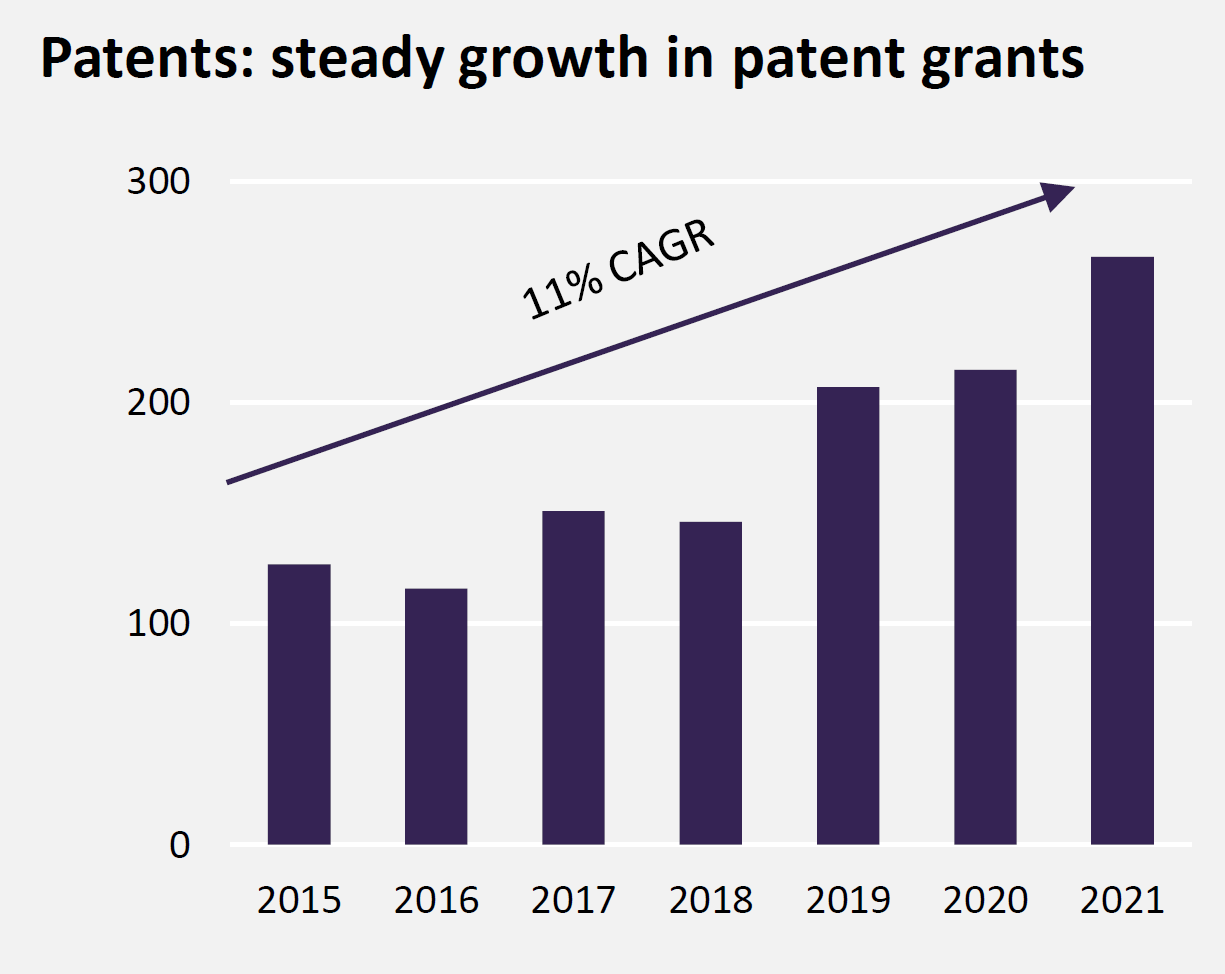
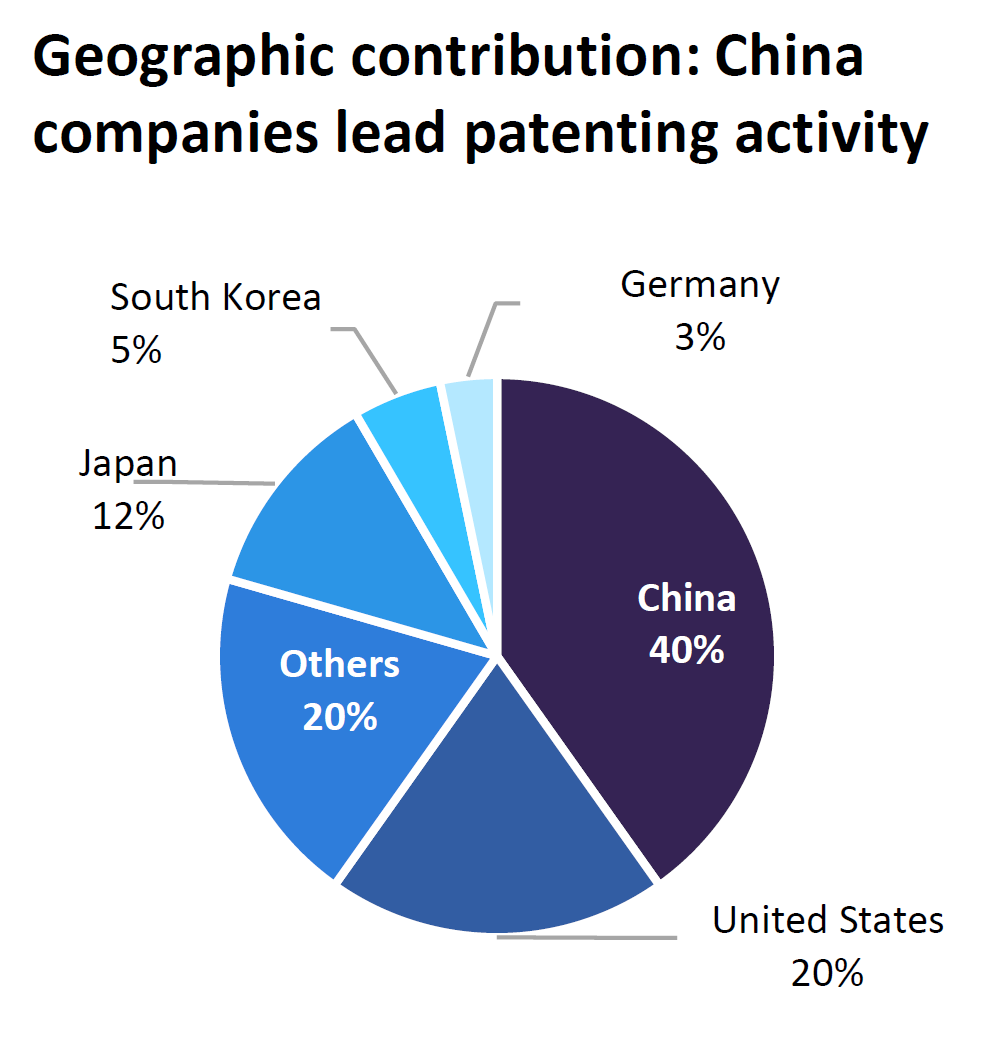
Air Liquide researchers claim that graphene-based catalysed materials for solid-state hydrogen storage are promising and can absorb and desorb hydrogen at ambient temperatures.
Conclusions
When analysing innovation interest in hydrogen development into the future, patents are a very solid indicator. In this article, SynerHy highlights innovation related to mobility, storage and H2-to-power. Fuel cells, alternative propulsion systems and renewable power sources will make hydrogen an integral part of the global transition to sustainability.
The hydrogen economy boom is driven by the global requirement for sustainable energy. Its development can be accelerated by three main factors: zero carbon emissions, lower production costs and being a substitute fuel. We hope that the information provided on emerging areas of innovation on this blog has been useful to the reader.
SynerHy, powering net zero!